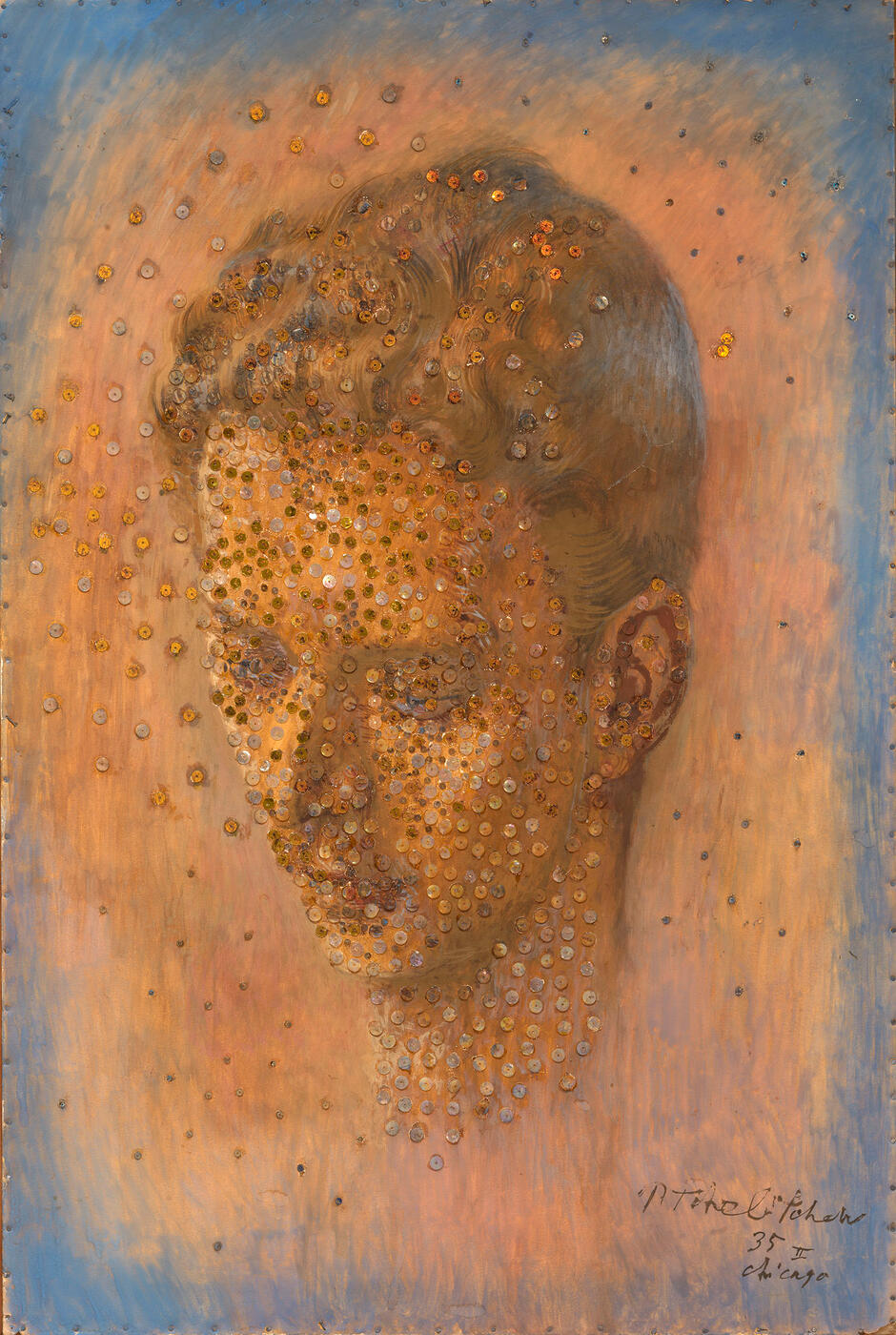Catalogue: Online Art Gallery

* 122. TCHELITCHEW, PAVEL (1898–1957)
Spangled Head, signed, inscribed "Chicago" and dated "35 II", also further signed, inscribed "Chicago/to store until my return/in nov 1949", titled and dated on the reverse.
Watercolour, gouache and collage with sequins on paper, laid on cardboard, 76 by 50.5 cm.
POA
Provenance: The estate of Madam Lucia Davidova, New York.
Modern and Contemporary Paintings, Drawings and Sculpture, Sotheby’s New York 29 September 1994, lot 264.
The Collecting Eye of Seymour Stein, Sotheby’s New York, 11 December 2003, lot 213.
Acquired at the above sale by the present owner.
Private collection, USA.
Exhibited: American Artists from the Russian Empire, State Russian Museum, 19 February–1 June 2009; State Tretyakov Gallery, 16 June–13 September 2009.
Literature: A Time to Gather... Russian Art from Foreign Private Collections, St. Petersburg, Palace Editions, 2007, p. 24, the present work can be seen on the wall of the collector’s apartment.
Exhibition catalogue, American Artists from the Russian Empire, St Petersburg, Palace Editions, 2009, p. 208, No. 77, illustrated.
Pavel Tchelitchew’s work Spangled Head, now presented for auction, was created during the artits’s first year in the USA. At the end of October 1934, Tchelitchew went off to America together with a young poet Charles Henri Ford, his closest friend. This was Tchelitchew’s first transatlantic trip, and afterwards he thought seriously about moving to the USA permanently. He had no particular prospects in France and Britain, whereas New York attracted him with its spacious galleries and keen interest in modern art. The United States opened up a new period in the artist’s work, with victories and defeats, and with undoubtedly interesting experiments and discoveries that were striking in their boldness and unusual techniques. At least two portraits are currently known in which the artist uses decorative spangles in a mixed technique, seemingly fusing them into the pictorial surface of the canvas or cardboard. An original, rather haughty “glamour” with spangles first appears in the portrait of the “cosmetics queen”, Helena Rubinstein, and in the image of Charles Henri Ford. The innovation was also continued in the Spangled Head. As Tchelitchew observed the characters of the individuals he was portraying, the artist strove to attain an exceptional expressiveness, as if supplying an amazing narrative for every image he created.
Notes on symbols:
* Indicates 5% Import Duty Charge applies.
Ω Indicates 20% Import Duty Charge applies.
§ Indicates Artist's Resale Right applies.
† Indicates Standard VAT scheme applies, and the rate of 20% VAT will be charged on both hammer price and premium.